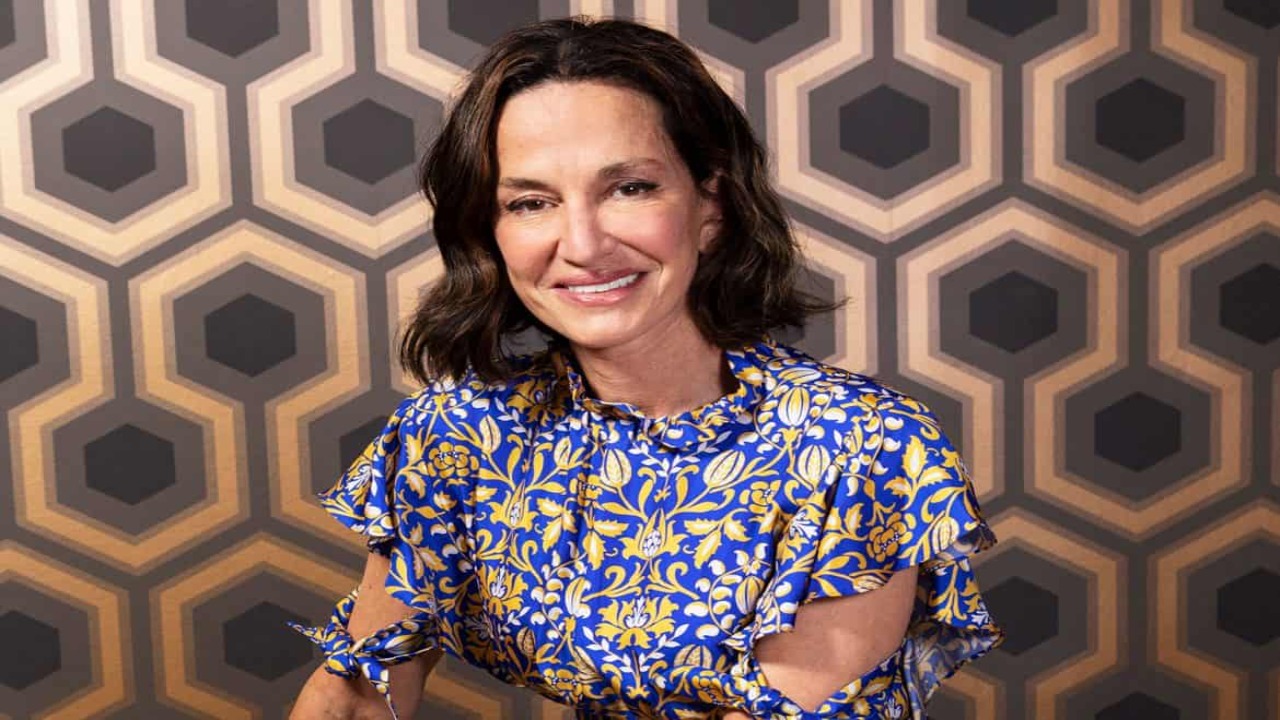Cynthia Rowley is a name that has become synonymous with color, playfulness, and elegance in the world of fashion. At 66 years old in 2025, Rowley’s journey from a small-town girl in Barrington, Illinois, to an internationally celebrated designer with an estimated net worth of $100 million, is a story of bold moves, resilience, and creative brilliance. Her decades-long career proves that success in fashion isn’t just about trends — it’s about building a vision that transcends time and culture.
A Creative Beginning in the Midwest
Born on July 29, 1958, Cynthia Rowley grew up in a household that encouraged artistic expression. Her family’s creative legacy included a grandfather credited with designing the iconic Pabst Blue Ribbon logo, signaling early on that she came from a lineage of visual thinkers. Surrounded by this influence, Rowley’s artistic sensibility began taking shape during her childhood.
She later honed her talent at the School of the Art Institute of Chicago, where her flair for bold design set her apart from her peers. Her time there wasn’t just about technique — it was about finding her voice. A prestigious award during her senior year helped finance her move from Chicago to New York City, where her career would begin in earnest.
The Birth of a Brand: Starting with $3,000
In the early 1980s, Rowley launched her fashion venture with just a $3,000 loan from her grandmother. Like many entrepreneurial stories, her beginning was far from glamorous. Her first fashion show had minimal attendance and little industry buzz. But Rowley didn’t flinch. Her determination to build something lasting led to the founding of the Cynthia Rowley Collection in 1988.
The brand began with women’s clothing but quickly gained attention for its vibrant colors, edgy silhouettes, and accessible luxury appeal. Her designs broke away from the minimalism of the era, bringing a refreshing sense of playfulness and femininity to high fashion.
Expanding Beyond Fashion
What separates Cynthia Rowley from many of her contemporaries is how seamlessly she scaled her brand into multiple categories. Over time, the Cynthia Rowley Collection expanded to include:
- Accessories
- Handbags
- Eyewear
- Perfume
- Shoes
- Cosmetics
This approach to diversification wasn’t random. Each product extension retained her brand’s signature look: youthful, energetic, and imaginative. This cohesive brand identity helped her build a loyal customer base that appreciated both style and substance.
Her global business operations reflect her ambition. Today, Cynthia Rowley stores can be found in cities like New York, Chicago, Boston, and across international locations in Japan, Hong Kong, and Taiwan. These strategically chosen hubs have allowed her to cater to a wide demographic and helped position her as a global tastemaker.
Awards and Recognition
Throughout her career, Rowley has earned multiple accolades that affirm her place in fashion history. Some of her most notable honors include:
- Perry Ellis Award for New Fashion Talent (1994)
- Legend of Fashion Award by the School of the Art Institute of Chicago (2012)
- Designer of the Year at the American Image Awards (2015)
- Honorary Doctorate from The Art Institute of Chicago (2023)
These recognitions speak not only to her design acumen but also to her sustained influence on the industry.
Personal Life and Family
Rowley’s personal life has seen both triumphs and tragedies. She lost her first husband, Tom Sullivan, in 1994, a moment that deeply affected her life and work. Later, she found love again with Bill Powers, a well-known art dealer and writer. Together, they’ve raised two daughters, Kit and Gigi, who have also stepped into creative spaces. Kit, in particular, has gained attention through reality TV and social media for her fashion-forward persona.
Her family has been central to her life, shaping how she balances business, motherhood, and creativity. Despite her public presence, Rowley has managed to maintain a grounded lifestyle, often choosing family moments over industry parties.
Smart Investments: Real Estate and Business Strategy
Cynthia Rowley’s net worth isn’t only built on fashion. She has also proven herself a shrewd investor, particularly in real estate. In 2014, she purchased a West Village townhouse in New York for $11 million and sold it in 2019 for $14 million, showing her sharp sense of timing in the property market. She continues to own several properties across Manhattan, including commercial and residential spaces.
This approach to wealth management has helped her stay financially independent and weather shifts in the fashion economy — a trait not all designers can claim.
Author, Speaker, and Media Figure
Outside of fashion and real estate, Cynthia Rowley is also a successful author. She’s penned several books focused on design, personal style, and living a creative life. These works have expanded her reach beyond fashion lovers to a broader lifestyle audience.
Her media appearances — including guest spots on fashion-related reality shows and interviews — have contributed to her visibility. These ventures not only increased her public recognition but also opened up additional revenue streams.
A Lasting Legacy
Even at 66, Cynthia Rowley shows no signs of slowing down. She continues to release new collections, collaborate with up-and-coming designers, and explore digital platforms to reach the next generation. Whether through TikTok, capsule collaborations, or mentorship programs, Rowley remains current in an ever-evolving industry.
Her journey is a testament to creativity, resilience, and business intelligence. From a $3,000 startup to a $100 million empire, Cynthia Rowley has proven that fashion can be both expressive and enduring — and that success, when built on authenticity, can last a lifetime.
As new names enter the fashion scene every year, Rowley’s brand continues to thrive by staying true to its core: empowering women through art, color, and confidence. Her legacy isn’t just stitched into clothes — it’s stitched into the fabric of modern fashion itself.From Midwest Roots to Global Runways
